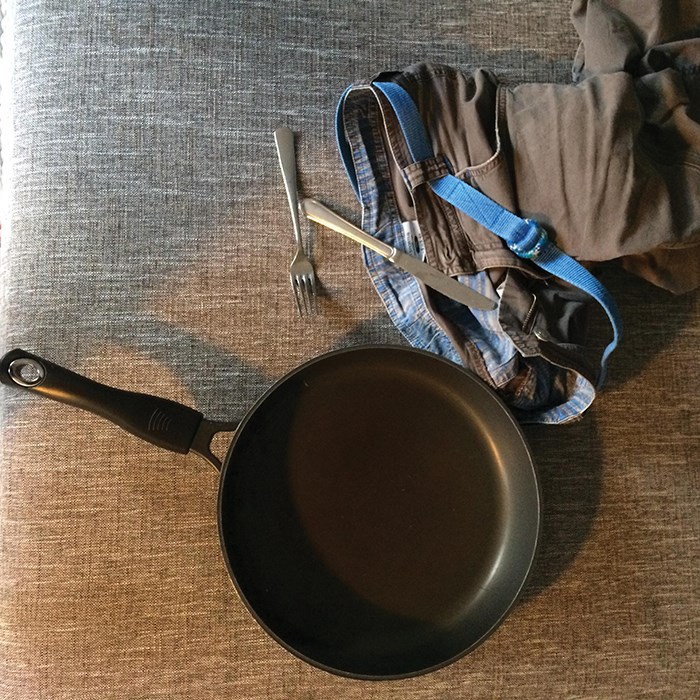What’s in a name? Names are given to us, loaded with power and opportunity, by those who bore us. They are totems of great and powerful things to come, as we become the people we were meant to be.
Names are also links to our unlived past, where our parents took a piece of history and passed it on to us without our understanding.
Names are loaded with meaning and stories are the fibers that give strength to this meaning.
In climbing, a route’s name holds the same role and power. Let’s take, on a whim, one of Squamish’s less well-known but quality moderate crack climbs; a climb that sits quietly in behind the third summit of the Chief and makes people chuckle.
“March Of The Kitchen Utensils,” first climbed in 1981 by John Howe, Joe Buszowski and Blake Robinson, is a beauty of a 5.9 wide crack climbing route at a quiet and peaceful crag named the Cirque Of The Uncrackables.
At first glance, you stand below the widening, shallow, open book, left-facing corner and immediately think about the distinct lack of gear the first ascensionists must have missed climbing this gem.
All they, and most about to climb this crack, want is everything plus the kitchen sink when in reality all the climber has is whatever larger cams they own plus any begged and borrowed.
The lead climber takes their metal trinkets for a walk up the crack and, boom, we have “March of The Kitchen Utensils.”
If only this simple explanation rung true. If only this was an ice cube and not the tip of the iceberg. It is often said that our lives are a collection of ever-evolving stories we tell ourselves, over and over, constantly changing with experiences and confidences.
Narratives play a strong and connecting role in our understanding of the world around us. This includes climbing. Whether they are fact or fiction, they contribute to our collective climbing history.
The legends and myths, tall tales and accounts of “March Of The Kitchen Utensils” are deep and wide and will change the way you think about climbing, especially if you are relatively new to the activity.
The original thread, followed back a ways, begins with a band of then-�鶹�����local climbers who were frustrated to the point of mirth at the popularity of one �鶹�����multipitch classic; Diedre on the Apron of the Chief.
Cutting right up the middle of the 500-foot slab, Diedre is a right-facing corner feature that, on any given day in summer, may have two or more parties at every belay. Anyway, back in the ’80s it was already popular and these gentlemen took occasion to have some sassy fun with this fact. The lads, keen sportsmen in every regard, donned their birthday suits and adorned themselves with knives, forks, spoons and even a slung teakettle to mimic the massive racks that most dragged up the classic Diedre.
Showing they still held onto a scrap of decency, the athletes camouflaged their identities by wearing paper bags on their heads.
Climbing unroped and in a tight pack, the disrobed athletes began soloing up Diedre, hooting and hollering, clinking and glockenspielling as they went, their inventive culinary ringing off the granite wall. Because it was a busy weekend they passed party after party at each belay.
The shocked crowds couldn’t even back away slowly because they were clipped to anchors, held still as the nude soloers stemmed their way up to, past and on above them.
For a moment, consider that Diedre is a corner system which requires stemming. Stemming is not the ideal position you want as the gaggle of bagged, clinking solo-ers roams past high on a wall.
The final detail that I’ve heard, maybe fact, maybe fiction, about their ascent is that when nearing the top of Diedre, as the climbing becomes easier and the wall less steep, a large group of ladies was encountered.
They were part of an all-female weekend multipitch event most likely.
I can only imagine the commentary that flew both ways as The March Of The Kitchen Utensils came to an end.
Oh, to be a fly on the wall… Happy climbing.




